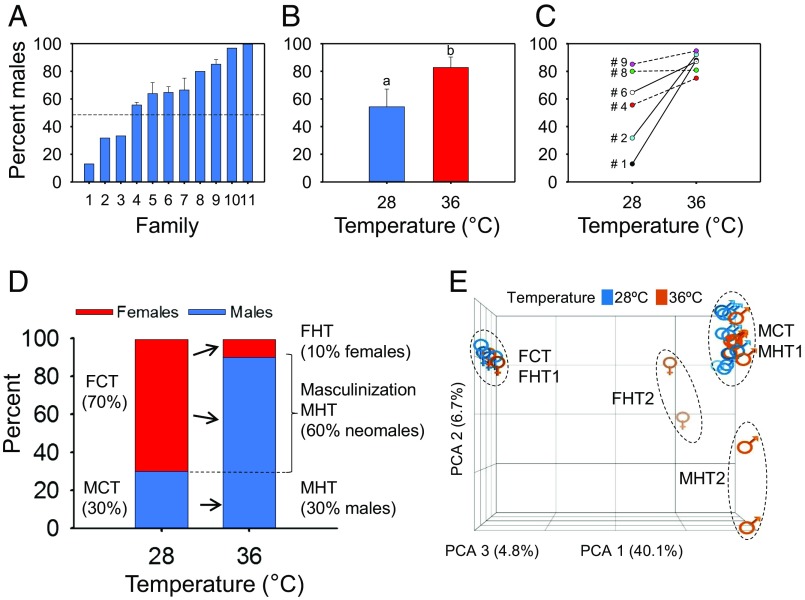Fig. 1.
Masculinizing effect of early high-temperature treatment in zebrafish. (A) Sex ratio variability in zebrafish broods originating from 11 different families when reared at control temperature (28 °C). For five families (4 to 7 and 9), where two to six broods from repeated crosses were analyzed, the mean ± SEM is shown. A total of 1,202 fish were used. (B) Early treatment (18 to 32 dpf) with high temperature (36 °C) increased the proportion of males. The mean ± SEM of six independent families for control (28 °C; n = 421) and treated (36 °C; n = 316) groups is shown. Statistically significant differences were found between the two sex ratios (P < 0.05; χ2 test). (C) Genotype-dependent variation of the sex ratio response to high temperature (36 °C), as illustrated by the broods originating from six different families. Lines between data points represent significant (solid) and nonsignificant (dashed) differences between control (28 °C) and heat-treated (36 °C) groups. The number of offspring individuals sexed per family were as follows: family 1, n = 110; family 2, n = 92; family 4, n = 112; family 6, n = 168; family 8, n = 56; family 9, n = 199. # indicates family IDs from A. (D) Increase in male proportion at 90 dpf after early exposure to high temperature (36 °C; 7 to 32 dpf; n = 51) in a zebrafish brood originating from a family (#2) that produced a female-biased offspring (70% females) when reared at control temperature (28 °C; n = 41). FCT, females control temp. FHT, females high temp. MCT, males control temp. MHT, males high temp. (E) Clustering of untreated controls (28 °C; blue) and heat-treated (36 °C; orange) 90-dpf fish based on their gonadal transcriptome profiles by principal component analysis (PCA). Whereas the majority of males and females formed a tight group each, two males (MHT2) and two females (FHT2) with different profiles could be observed in both sexes among fish exposed to 36 °C.

